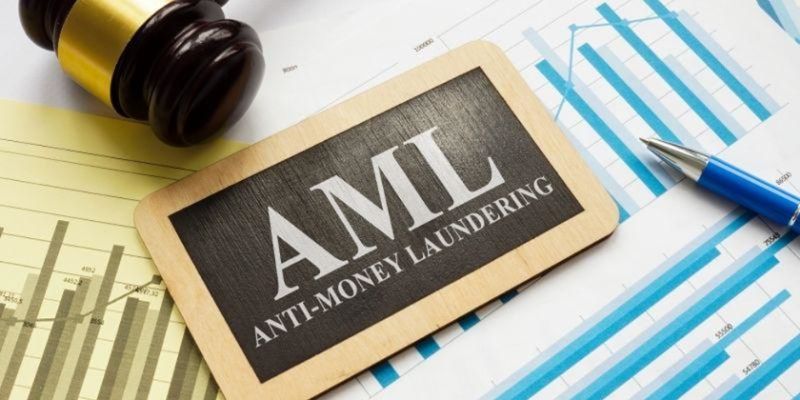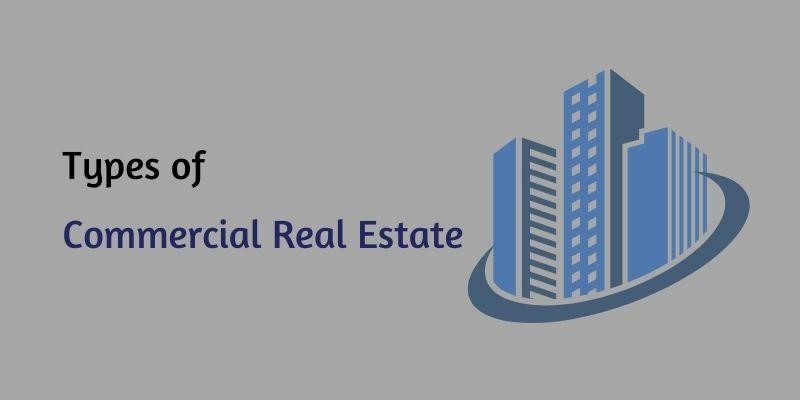Regarding financial crime, money laundering through real estate is one of the most notorious and enduring methods. It is a practical approach for concealing illegal funds, making them appear to originate from legitimate sources.
Money laundering in real estate often involves colossal sums that can be conveniently laundered in a single transaction.
A report by the Center for Advanced Defense Studies highlighted UAE’s real estate as a target for money laundering. The report explores $100 million in suspicious purchases of apartments and villas, where foreign ownership fuels construction that now outpaces local demand.
As money launderers continually adapt and refine their methods, understanding this phenomenon is imperative for anyone involved in the real estate sector or dedicated to upholding its integrity.
In our blog, we will explore the various tactics criminals employ, their motives, and, most importantly, ways to detect and prevent such activities.
Whether you’re a real estate professional, investor, or someone who values the transparency and legality of financial transactions, this guide will offer you a comprehensive understanding of the challenges money laundering poses in the real estate arena.
What is Real Estate Money Laundering?
Real estate money laundering is when individuals with illegally obtained funds seek to legitimize their wealth through the real estate market.
Criminals use various methods, including cash, shell companies, and trusts, to conceal their identities when purchasing properties.
The real estate sector provides a conducive environment for converting unlawfully acquired money into clean, legitimate assets, allowing these individuals to enjoy gains while successfully masking their illegal origins.
How Does Money Laundering Through Real Estate Work?
Money laundering through real estate involves a series of complex transactions aimed at disguising the illicit origins of funds through property transactions. This process generally unfolds in the following manner:
- Layering: Criminals use sophisticated methods to complicate the origin of the funds, often involving numerous transactions and financial entities to create a complex money trail.
- Property Acquisition: Criminals use these disguised funds to acquire real estate properties, making these purchases in a way that makes it difficult to trace the money back to its illegal source.
- Rent or Resell: The acquired properties can generate rental income, sell at a profit, or create a facade of legitimate property transactions.
- Integration: At this stage, the illegally obtained funds, now laundered through the property, are integrated into the legal economy, making it challenging to differentiate between these and legally earned assets.
- Exit: The laundered money may eventually be withdrawn or sold as legitimate income.
To carry out these processes, criminals may employ techniques such as using offshore companies or trusts, structuring transactions below the reporting threshold and engaging in real estate deals with cash payments to conceal the origin of funds.
UAE Regulations for Anti-Money Laundering in Real Estate
In the United Arab Emirates (UAE), anti-money laundering (AML) regulations in the real estate sector have been established to counter the potential risks of money laundering and terrorist financing.
The UAE recognizes the importance of monitoring real estate transactions, given the country’s thriving real estate market and the potential for misuse by criminals seeking to legitimize ill-gotten gains. Here are some essential regulations:
- Know Your Customer (KYC): Real estate agents and developers must perform due diligence on their clients. This includes verifying the parties’ identities in a transaction and understanding the source of funds. In practice, this means verifying the identity of the buyer, seller, and any beneficial property owners.
- Reporting Requirements: Reporting entities are mandated to report suspicious transactions to the UAE’s Financial Intelligence Unit (FIU), which operates within the UAE Central Bank. They are also required to maintain records of customer transactions.
- Anti-Money Laundering Policies: Real estate agencies and developers must establish and implement AML policies and procedures. This involves designating a Compliance Officer responsible for AML compliance, conducting risk assessments, and developing internal controls to mitigate money laundering risks.
- Enhanced Due Diligence (EDD): In some instances, enhanced due diligence measures are to be applied. These are designed to manage higher-risk transactions and clients more closely. For example, deals involving politically exposed persons (PEPs) or high-value transactions may require extra scrutiny.
- Penalties: Penalties for non-compliance with these regulations can include substantial fines, imprisonment, and revocation of licenses.
It’s worth noting that the UAE has been actively strengthening its AML framework. These regulations reflect the UAE’s commitment to maintaining a transparent and accountable property market while safeguarding against potential misuse of illicit financial activities.
We also advise real estate professionals to complete the Anti-Money Laundering course for the UAE Real Estate Sector to understand the risks better!
How Can You Avoid Money Laundering in Real Estate?
Specific procedures like sanction screening, PEP (Politically Exposed Persons) screening, and risk assessments are essential when working to prevent money laundering in real estate.
Here’s how these components fit into the anti-money laundering (AML) process in real estate:
1. Sanction Screening
Sanction screening involves checking your clients and associated parties against international sanctions lists.
These lists include individuals, entities, and countries subject to sanctions due to their involvement in criminal activities, terrorism, or human rights abuses. This screening can help you identify clients or transactions linked to prohibited parties in real estate.
2. PEP Screening
Politically Exposed Persons (PEPs) hold prominent public positions or have previously held them. Given their positions, they may have a higher risk of being involved in corrupt activities.
PEP screening identifies whether your clients or related individuals fall into this category. Enhanced due diligence is often required for PEPs to ensure transparency and minimize the risk of money laundering.
3. Risk Assessments
Risk assessments are a critical component of an AML program in real estate. This involves evaluating the level of risk associated with specific clients, transactions, or even geographical locations.
Risk factors may include the property’s location, the client’s background, transaction size, and the source of funds. Enhanced due diligence and monitoring may be necessary for higher-risk scenarios, while lower-risk transactions can follow standard AML procedures.
Conducting these screenings and assessments helps real estate brokers and other professionals identify and address potential money laundering risks.
By systematically applying these measures, you can minimize the likelihood of becoming unwitting participants in money laundering activities and ensure that your real estate transactions comply with AML regulations.
Real Estate Money Laundering Red Flags
Identifying red flags for real estate money laundering is essential in maintaining a vigilant anti-money laundering (AML) program. Here are some common indicators to watch for:
- Use of Cash for High-Value Transactions: When a buyer insists on making a significant payment in cash without a reasonable explanation, this could be a red flag. Cash transactions make it easier to hide the source of funds.
- Unusual or Suspicious Transaction Patterns: Multiple transactions for the same property, rapid buying, and selling, or transactions involving a complex web of shell companies may signal money laundering.
- Incomplete or Inconsistent Documentation: When clients provide incomplete, altered, or contradictory information, it should raise concerns. Missing documents, forged signatures, or unusual identification documents can be red flags.
- High-Risk Geography: Transactions involving properties in high-risk or non-transparent jurisdictions can be problematic. These areas may have weaker AML regulations or be associated with illicit activities.
- Use of Shell Companies: The involvement of shell companies that exist only on paper and have no legitimate business purpose can signal money laundering. These entities are often used to obscure the valid beneficial owner.
- Rapid Fluctuations in Property Value: Unexplained or rapid fluctuations in property value can signal money laundering. Criminals may artificially inflate property prices to legitimize or move illicit funds.
- Lack of Economic Rationale: Transactions without a clear economic rationale or where the purchase price significantly exceeds the property’s market value are suspicious.
- Inadequate Due Diligence: Please conduct proper customer due diligence. Red flags need to be verifying the source of funds, ignoring beneficial ownership information, or neglecting sanctions and PEP screening.
- Client’s Background: Clients with known criminal backgrounds or involved in suspicious activities outside of real estate should be cautiously approached.
- Buyer’s Behavior: Unusual behavior, such as avoiding direct contact with sellers or being reluctant to meet in person, can be a red flag.
Real estate professionals should be vigilant in identifying these red flags and reporting suspicious transactions to relevant authorities. Implementing thorough due diligence, verifying the source of funds, and maintaining robust AML procedures can help mitigate the risk of real estate money laundering.
Examples of Money Laundering in Real Estate
Real-life examples help to understand the seriousness of money laundering in real estate. Here are a few notable cases:
- The Panama Papers: The Panama Papers leak in 2016 revealed how law firm Mossack Fonseca had facilitated money laundering and tax evasion through offshore companies. While it wasn’t limited to real estate, it exposed a global web of illicit money that often flowed into high-end properties.
- Trump SoHo: The Trump SoHo project in New York faced scrutiny due to allegations of money laundering by the Bayrock Group and its connections to individuals from the former Soviet Union. While the project’s developers were acquitted, it highlighted the risk of illicit funds entering luxury real estate.
- Jho Low and 1MDB: Malaysian financier Jho Low was accused of laundering billions through real estate, including luxury condos and hotels in the U.S. These assets were allegedly purchased with funds misappropriated from the Malaysian state investment fund 1Malaysia Development Berhad (1MDB).
- The Danske Bank Scandal: Danske Bank faced a significant money laundering scandal involving approximately €200 billion of suspicious transactions. Real estate transactions in Estonia were a part of this vast money laundering network.
- The Magnitsky Act Cases: The Magnitsky Act targets Russian officials involved in human rights abuses. Funds from this act allegedly flowed into luxury real estate in the U.S., leading to increased scrutiny of property purchases.
These cases underscore the global nature of money laundering through real estate. These examples demonstrate the importance of robust anti-money laundering (AML) regulations and the need for real estate professionals to be vigilant in preventing money laundering within their sector.
Conclusion
Money laundering through real estate is a significant global issue that continues to raise concerns in the financial and real estate sectors. Criminals exploit the vulnerabilities of the real estate market to legitimize their illicit funds, posing risks to the integrity of the industry.
Understanding the workings of money laundering in real estate and the regulations and red flags to look out for is essential. This knowledge empowers professionals to actively participate in anti-money laundering efforts and protect the sector’s reputation and financial stability.
To combat this issue effectively, professionals in the real estate industry, from agents to developers and financial institutions, must remain vigilant, adhere to anti-money laundering regulations, and conduct due diligence on their clients.
The fight against money laundering requires collaboration and a deep understanding of the methods used by criminals.
At ThinkProp, we offer comprehensive real estate training programs that cover anti-money laundering measures and equip professionals with the knowledge and tools to identify and prevent illicit activities.
Join us in taking a proactive stance against money laundering, ensuring a transparent, trustworthy, and secure real estate industry.












